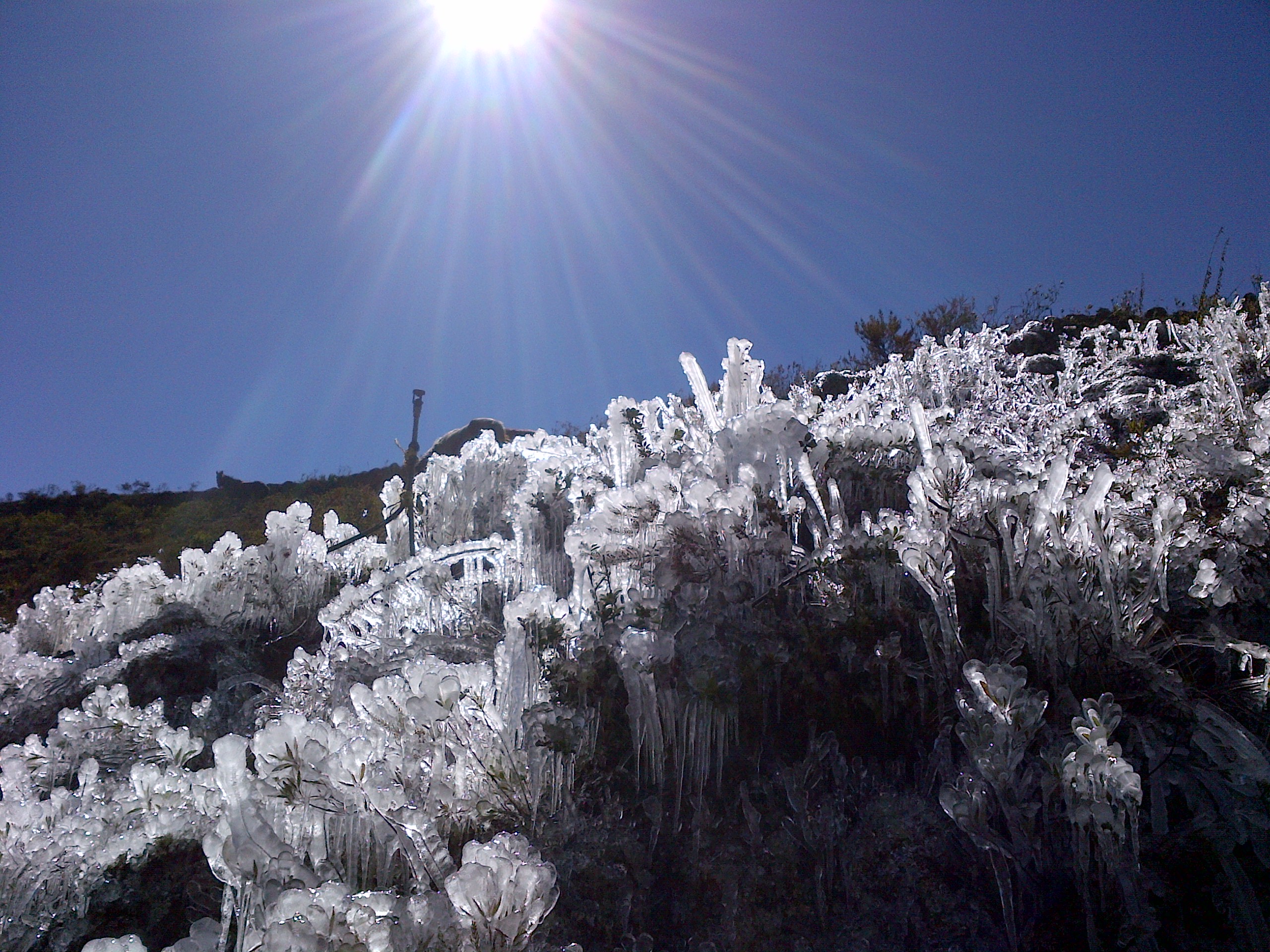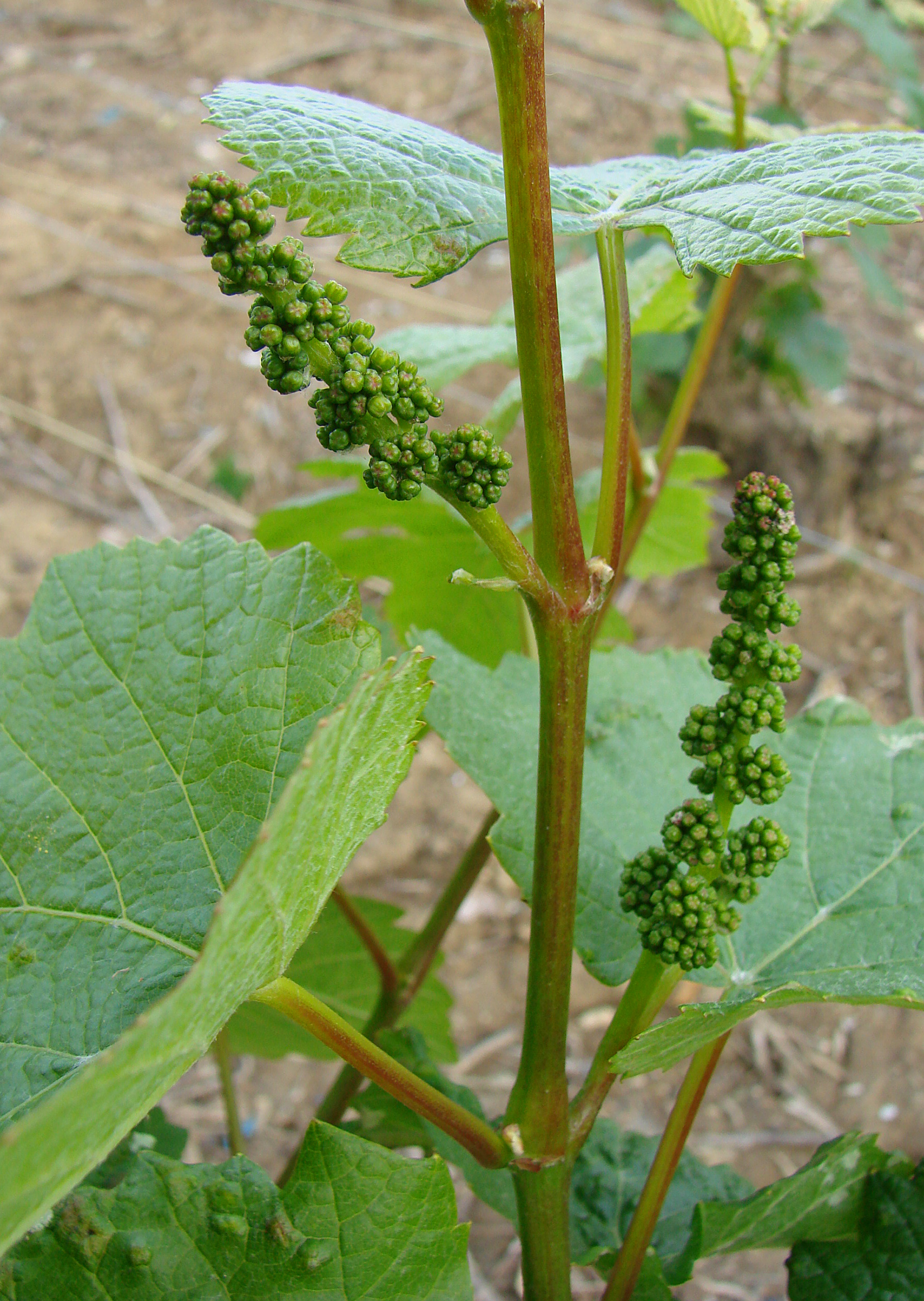|
Vitis Cordifolia
''Vitis vulpina'' (with common names frost grape, winter grape, fox grape, and wild grape.) is a North American species of herbaceous perennial vines in the grape family. It is widespread across most of the eastern and central United States as well as the Canadian Province of Ontario. The genus name ''Vitis'' comes from the Latin word for "vine" and the species name ''vulpina'' comes from the Latin word for "fox-like" or belonging to a fox. It is believed that foxes were attracted to this type of grapevine, and Linnaeus used the term ''vulpina'' to differentiate these smaller wild grapes from the other American known grapes. The more common name, frost grape, refers to the fact that this otherwise acidic/tart-tasting grape becomes more desirable and sweet once it is exposed to a frost. ''Vitis vulpina'' is a high-climbing woody vine with a thick trunk and red tendrils. The grapes and the vine itself have many uses ranging from herbal remedies to edible delicacies. Description ... [...More Info...] [...Related Items...] OR: [Wikipedia] [Google] [Baidu] |
Carl Linnaeus
Carl Linnaeus (23 May 1707 – 10 January 1778), also known after ennoblement in 1761 as Carl von Linné,#Blunt, Blunt (2004), p. 171. was a Swedish biologist and physician who formalised binomial nomenclature, the modern system of naming organisms. He is known as the "father of modern Taxonomy (biology), taxonomy". Many of his writings were in Latin; his name is rendered in Latin as and, after his 1761 ennoblement, as . Linnaeus was the son of a curate and was born in Råshult, in the countryside of Småland, southern Sweden. He received most of his higher education at Uppsala University and began giving lectures in botany there in 1730. He lived abroad between 1735 and 1738, where he studied and also published the first edition of his ' in the Netherlands. He then returned to Sweden where he became professor of medicine and botany at Uppsala. In the 1740s, he was sent on several journeys through Sweden to find and classify plants and animals. In the 1750s and 1760s, he co ... [...More Info...] [...Related Items...] OR: [Wikipedia] [Google] [Baidu] |
Vine
A vine is any plant with a growth habit of trailing or scandent (that is, climbing) stems, lianas, or runners. The word ''vine'' can also refer to such stems or runners themselves, for instance, when used in wicker work.Jackson; Benjamin; Daydon (1928). ''A Glossary of Botanic Terms with their Derivation and Accent'', 4th ed. London: Gerald Duckworth & Co. In parts of the world, including the British Isles, the term "vine" usually applies exclusively to grapevines, while the term "climber" is used for all climbing plants. Growth forms Certain plants always grow as vines, while a few grow as vines only part of the time. For instance, poison ivy and bittersweet can grow as low shrubs when support is not available, but will become vines when support is available. A vine displays a growth form based on very long stems. This has two purposes. A vine may use rock exposures, other plants, or other supports for growth rather than investing energy in a lot of supportive tissu ... [...More Info...] [...Related Items...] OR: [Wikipedia] [Google] [Baidu] |
Meteorological Winter
Winter is the coldest and darkest season of the year in temperate and polar climates. It occurs after autumn and before spring. The tilt of Earth's axis causes seasons; winter occurs when a hemisphere is oriented away from the Sun. Different cultures define different dates as the start of winter, and some use a definition based on weather. When it is winter in the Northern Hemisphere, it is summer in the Southern Hemisphere, and vice versa. Winter typically brings precipitation that, depending on a region's climate, is mainly rain or snow. The moment of winter solstice is when the Sun's elevation with respect to the North or South Pole is at its most negative value; that is, the Sun is at its farthest below the horizon as measured from the pole. The day on which this occurs has the shortest day and the longest night, with day length increasing and night length decreasing as the season progresses after the solstice. The earliest sunset and latest sunrise dates outside t ... [...More Info...] [...Related Items...] OR: [Wikipedia] [Google] [Baidu] |
Raisin
A raisin is a Dried fruit, dried grape. Raisins are produced in many regions of the world and may be eaten raw or used in cooking, baking, and brewing. In the United Kingdom, Republic of Ireland, Ireland, New Zealand, Australia and South Africa, the word ''raisin'' is reserved for the dark-colored dried large grape, with ''sultana (grape), sultana'' being a golden- or green-colored dried grape, and ''Zante currant, currant'' being a dried small Black Corinth seedless grape. Varieties Raisin varieties depend on the types of grapes used and appear in a variety of sizes and colors, including green, black, brown, purple, blue, and yellow. Seedless varieties include sultanas (the common American type is known as Thompson Seedless in the United States), Zante currants (black Corinthian raisins, ''Vitis vinifera'' L. var. Apyrena), and Flame Seedless, Flame grapes. Raisins are traditionally sun-dried but may also be artificially dehydrated. Golden raisins are created with a trea ... [...More Info...] [...Related Items...] OR: [Wikipedia] [Google] [Baidu] |
Dormancy
Dormancy is a period in an organism's Biological life cycle, life cycle when growth, development, and (in animals) physical activity are temporarily stopped. This minimizes metabolism, metabolic activity and therefore helps an organism to conserve energy. Dormancy tends to be closely associated with Ecosystem, environmental conditions. Organisms can synchronize entry to a dormant phase with their Ecosystem, environment through predictive or consequential means. Predictive dormancy occurs when an organism enters a dormant phase ''before'' the onset of adverse conditions. For example, photoperiod and decreasing temperature are used by many plants to predict the onset of winter. Consequential dormancy occurs when organisms enter a dormant phase ''after'' adverse conditions have arisen. This is commonly found in areas with an unpredictable climate. While very sudden changes in conditions may lead to a high mortality rate among animals relying on consequential dormancy, its use can be a ... [...More Info...] [...Related Items...] OR: [Wikipedia] [Google] [Baidu] |
Decomposition
Decomposition is the process by which dead organic substances are broken down into simpler organic or inorganic matter such as carbon dioxide, water, simple sugars and mineral salts. The process is a part of the nutrient cycle and is essential for recycling the finite matter that occupies physical space in the biosphere. Bodies of living organisms begin to decompose shortly after death. Although no two organisms decompose in the same way, they all undergo the same sequential stages of decomposition. Decomposition can be a gradual process for organisms that have extended periods of dormancy. One can differentiate ''abiotic'' decomposition from ''biotic'' decomposition ( biodegradation); the former means "the degradation of a substance by chemical or physical processes", e.g., hydrolysis; the latter means "the metabolic breakdown of materials into simpler components by living organisms", typically by microorganisms. Animals, such as earthworms, also help decompose the organ ... [...More Info...] [...Related Items...] OR: [Wikipedia] [Google] [Baidu] |
Acid
An acid is a molecule or ion capable of either donating a proton (i.e. Hydron, hydrogen cation, H+), known as a Brønsted–Lowry acid–base theory, Brønsted–Lowry acid, or forming a covalent bond with an electron pair, known as a Lewis acid. The first category of acids are the proton donors, or Brønsted–Lowry acid–base theory, Brønsted–Lowry acids. In the special case of aqueous solutions, proton donors form the hydronium ion H3O+ and are known as Acid–base reaction#Arrhenius theory, Arrhenius acids. Johannes Nicolaus Brønsted, Brønsted and Martin Lowry, Lowry generalized the Arrhenius theory to include non-aqueous solvents. A Brønsted–Lowry or Arrhenius acid usually contains a hydrogen atom bonded to a chemical structure that is still energetically favorable after loss of H+. Aqueous Arrhenius acids have characteristic properties that provide a practical description of an acid. Acids form aqueous solutions with a sour taste, can turn blue litmus red, and ... [...More Info...] [...Related Items...] OR: [Wikipedia] [Google] [Baidu] |
Frost
Frost is a thin layer of ice on a solid surface, which forms from water vapor that deposits onto a freezing surface. Frost forms when the air contains more water vapor than it can normally hold at a specific temperature. The process is similar to the formation of dew, except it occurs below the freezing point of water typically without crossing through a liquid state. Air always contains a certain amount of water vapor, depending on temperature. Warmer air can hold more than colder air. When the atmosphere contains more water than it can hold at a specific temperature, its relative humidity rises above 100% becoming supersaturated, and the excess water vapor is forced to deposit onto any nearby surface, forming seed crystals. The temperature at which frost will form is called the dew point, and depends on the humidity of the air. When the temperature of the air drops below its dew point, excess water vapor is forced out of solution, resulting in a phase change directly fro ... [...More Info...] [...Related Items...] OR: [Wikipedia] [Google] [Baidu] |
Botanical Berry
In botany, a berry is a fleshy fruit without a drupe (pit) produced from a single flower containing one ovary. Berries so defined include grapes, currants, and tomatoes, as well as cucumbers, eggplants (aubergines), persimmons and bananas, but exclude certain fruits that meet the culinary definition of berries, such as strawberries and raspberries. The berry is the most common type of fleshy fruit in which the entire outer layer of the ovary wall ripens into a potentially edible "pericarp". Berries may be formed from one or more carpels from the same flower (i.e. from a simple or a compound ovary). The seeds are usually embedded in the fleshy interior of the ovary, but there are some non-fleshy exceptions, such as ''Capsicum'' species, with air rather than pulp around their seeds. Many berries are edible, but others, such as the fruits of the potato and the deadly nightshade, are poisonous to humans. A plant that bears berries is said to be bacciferous or baccate (from Lat ... [...More Info...] [...Related Items...] OR: [Wikipedia] [Google] [Baidu] |
Ripeness In Viticulture
In viticulture, ripeness is the completion of the ripening process of wine grapes on the vine which signals the beginning of harvest. What exactly constitutes ripeness will vary depending on what style of wine is being produced ( sparkling, still, fortified, ''rosé'', dessert wine, etc.) and what the winemaker and viticulturist personally believe constitutes ripeness. Once the grapes are harvested, the physical and chemical components of the grape which will influence a wine's quality are essentially set so determining the optimal moment of ripeness for harvest may be considered the most crucial decision in winemaking.J. Cox ''"From Vines to Wines"'' Fourth Edition, pg 97-106 Storey Publishing 1999 There are several factors that contribute to the ripeness of the grape. As the grapes go through '' veraison'', sugars in the grapes will continue to rise as acid levels fall. The balance between sugar (as well as the potential alcohol level) and acids is considered one of the ... [...More Info...] [...Related Items...] OR: [Wikipedia] [Google] [Baidu] |
Vitis
''Vitis'' (grapevine) is a genus of 81 accepted species of vining plants in the flowering plant family Vitaceae. The genus consists of species predominantly from the Northern Hemisphere. It is economically important as the source of grapes, both for direct consumption of the fruit and for fermentation to produce wine. The study and cultivation of grapevines is called viticulture. Most cultivated ''Vitis'' varieties are wind-pollinated with hermaphroditic flowers containing both male and female reproductive structures, while wild species are dioecious. These flowers are grouped in bunches called inflorescences. In many species, such as ''Vitis vinifera'', each successfully pollinated flower becomes a grape berry with the inflorescence turning into a cluster of grapes. While the flowers of the grapevines are usually very small, the berries are often large and brightly colored with sweet flavors that attract birds and other animals to disperse the seeds contained within the berries ... [...More Info...] [...Related Items...] OR: [Wikipedia] [Google] [Baidu] |
Ontario
Ontario is the southernmost Provinces and territories of Canada, province of Canada. Located in Central Canada, Ontario is the Population of Canada by province and territory, country's most populous province. As of the 2021 Canadian census, it is home to 38.5% of the country's population, and is the second-largest province by total area (after Quebec). Ontario is Canada's fourth-largest jurisdiction in total area of all the Canadian provinces and territories. It is home to the nation's capital, Ottawa, and its list of the largest municipalities in Canada by population, most populous city, Toronto, which is Ontario's provincial capital. Ontario is bordered by the province of Manitoba to the west, Hudson Bay and James Bay to the north, and Quebec to the east and northeast. To the south, it is bordered by the U.S. states of (from west to east) Minnesota, Michigan, Ohio, Pennsylvania, and New York (state), New York. Almost all of Ontario's border with the United States follows riv ... [...More Info...] [...Related Items...] OR: [Wikipedia] [Google] [Baidu] |







